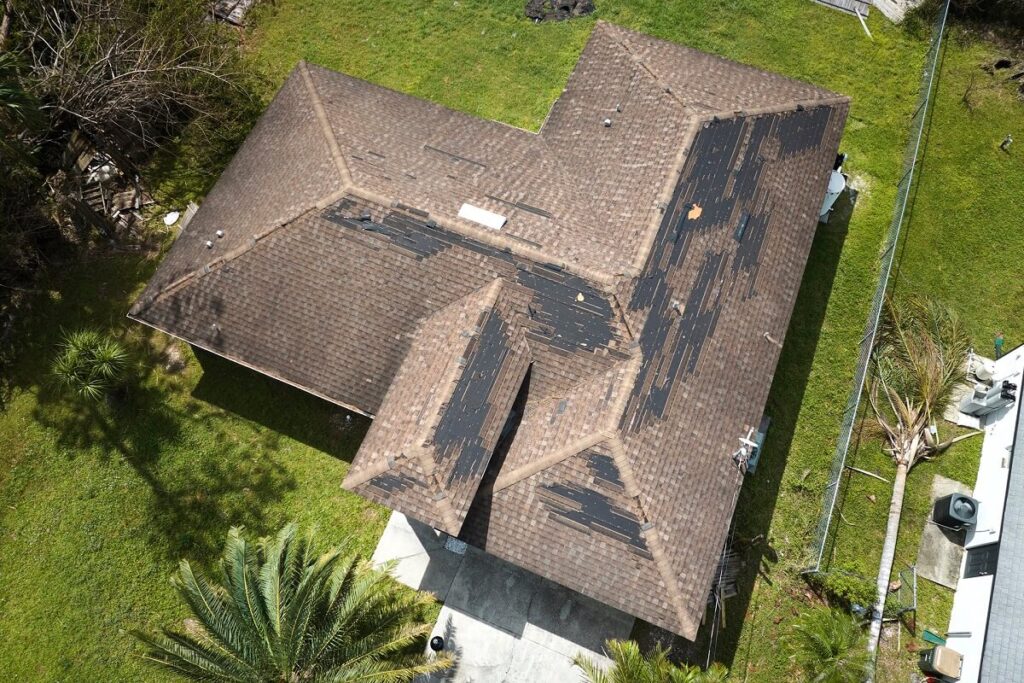Roof health is essential for maintaining the safety and comfort of your home. Your roof endures constant exposure to the elements, facing intense heat, heavy rain, strong winds, and even hail. Over time, wear and tear take their toll, and one of the most common signs of aging is shingle granule loss. Ignoring these signs can compromise roof health, leading to leaks and structural issues. If you notice significant granule loss, it may be time to call a roofing contractor to assess the condition of your roof and ensure it remains strong, durable, and capable of protecting your home.
The Role of Shingle Granules – Roof Health
Before we discuss excessive granule loss, let’s understand the significance of shingle granules in the context of your roof’s functionality, as explained by a roofing contractor. These small, often colored particles serve a multitude of purposes, making them indispensable to the overall health and longevity of your roofing system:
- Protection from UV Rays – Granules act as a protective shield against the relentless assault of ultraviolet (UV) rays from the sun. They absorb and deflect sunlight, preventing the underlying asphalt layer of the shingle from deteriorating under the sun’s harsh radiation.
- Fire Resistance – Some shingles incorporate fire-resistant granules. These specialized granules serve as a crucial element in minimizing the risk of fire damage to your home.
- Waterproofing: – Shingle granules play a pivotal role in repelling water. They create a barrier that prevents moisture from infiltrating the shingle layers and seeping into the roof structure.
- Aesthetic Appeal – Granules provide color and texture to your shingles, contributing significantly to the curb appeal of your home. The visual aesthetics of your roof are often defined by the quality and condition of these granules.
- Longevity – The protective qualities of granules also contribute to the overall lifespan of your shingles. They preserve the integrity of the shingle and extend its useful life by shielding it from various environmental stressors.
With these critical functions, it’s evident that shingle granules are not just superficial adornments but serve as the first line of defense against the elements.
Normal Granule Loss vs. Excessive Shedding
Understanding what constitutes normal granule loss versus excessive shedding is fundamental in recognizing potential issues with your roof. Granule loss is a natural occurrence over time, as even the most resilient shingles will eventually exhibit signs of wear. However, distinguishing between the two is essential for effective roof maintenance.
- Normal Granule Loss – As shingles age, a gradual loss of granules can be expected. This aging process results from exposure to sunlight, precipitation, temperature fluctuations, and the overall passage of time. It is not uncommon to discover a modest amount of granules in your gutters, particularly within the first few months following the installation of new shingles.
- Excessive Granule Shedding – In contrast, excessive granule shedding is cause for alarm. This is characterized by a sudden, conspicuous increase in the quantity of granules accumulating in your gutters, downspouts, or on the ground surrounding your property. Excessive granule loss is an indication of potential problems with your roofing system and may have severe implications for the health and longevity of your roof.
Common Causes of Excessive Granule Loss
Excessive granule loss can be attributed to a variety of factors, each playing a crucial role in the overall integrity of your roof. It’s vital to be aware of these causes to take proactive measures in addressing the issue:
- Age of the Roof – Every roofing system has a natural lifespan. As your roof ages, the adhesive properties of the asphalt in the shingles may deteriorate, leading to the shedding of granules.
- Environmental Factors – Extreme weather conditions such as hailstorms, heavy rains, and high winds can dislodge granules from your shingles. These elements can be particularly brutal, causing abrupt granule loss. Similarly, prolonged exposure to intense UV light can accelerate the aging process of shingles, causing them to lose granules more rapidly.
- Shingle Quality – Shingles constructed with lower-quality materials are more prone to granule loss. If you have low-grade shingles, they may shed granules more rapidly than their higher-quality counterparts.
- Improper Installation – Shingles that are not securely fastened during installation may be susceptible to premature granule loss, especially due to wind uplift.
- Manufacturing Defects – While rare, manufacturing defects can cause granule loss. If your shingles were produced with flaws or imperfections, granule shedding may be a noticeable consequence.
- Unmaintained Gutters – When gutters become clogged with debris, water can back up, leading to shingle erosion and granule loss. Water damage and deterioration are the result of these obstructed drainage systems.
- Pest Activity – Animals such as raccoons, squirrels, or birds, may inflict damage to your roof. Their activities can include scraping or pecking at shingles, causing granules to detach in the process.
Identifying the root cause of excessive granule loss is imperative in implementing effective solutions. Whether it’s addressing an aging roof, poor-quality shingles, or the effects of severe weather, pinpointing the source of the issue is the first step toward ensuring the health and longevity of your roofing system.
Consequences of Excessive Granule Loss
Excessive granule loss can have a multitude of consequences that can impact both the structural integrity and aesthetic appeal of your roof. Understanding these potential outcomes is essential in appreciating the gravity of the issue:
- Reduced Lifespan – The protective role of granules against UV rays and other environmental stressors is paramount to the longevity of your shingles. Granule loss accelerates the aging process, leaving the underlying asphalt layer more vulnerable to degradation. Consequently, your shingles may have a reduced lifespan, necessitating earlier replacement.
- Water Damage – Granule loss exposes the asphalt layer of the shingles, making it susceptible to water infiltration. This can result in leaks, moisture damage, and rot within the roofing structure. Untreated water damage can extend beyond your roof, affecting the interior of your home and compromising its structural stability.
- Decreased Energy Efficiency – Excessive granule loss can influence the energy efficiency of your home. When the reflective properties of granules are lost, your roof may absorb more heat, transferring into your home and requiring additional cooling energy.
While some degree of granule loss is normal, excessive shedding can be an alarming indicator of underlying issues that demand your attention. Maintaining your roof and providing repair or replacement as necessary is a critical step in protecting the value of your property.
Peak Roofing & Exteriors
If you’re looking for an honest and experienced roofing contractor that can handle your home or business roofing needs in Northwest Arkansas, Northern Louisiana, or West Texas, look no further. Peak Roofing & Exteriors will deliver with quality and integrity. Contact us today and book your FREE inspection!

